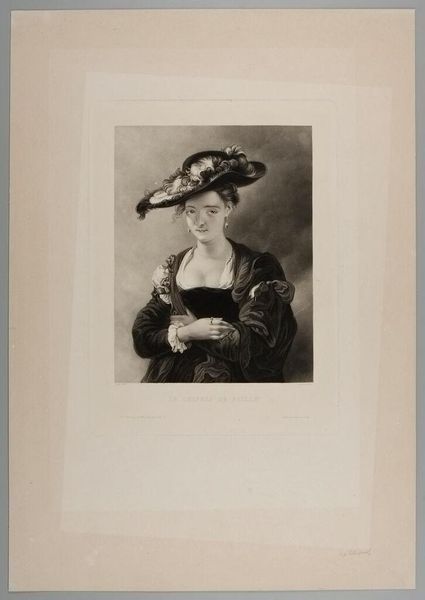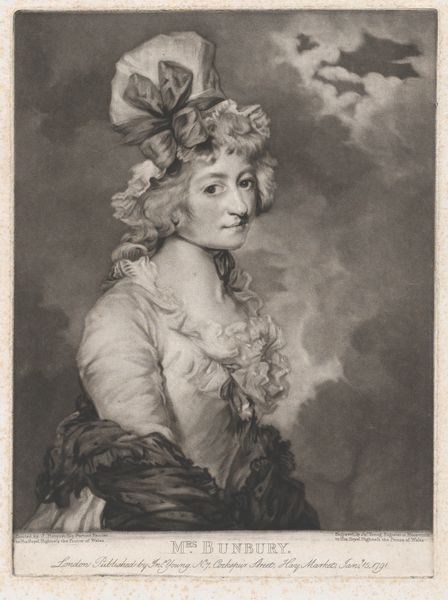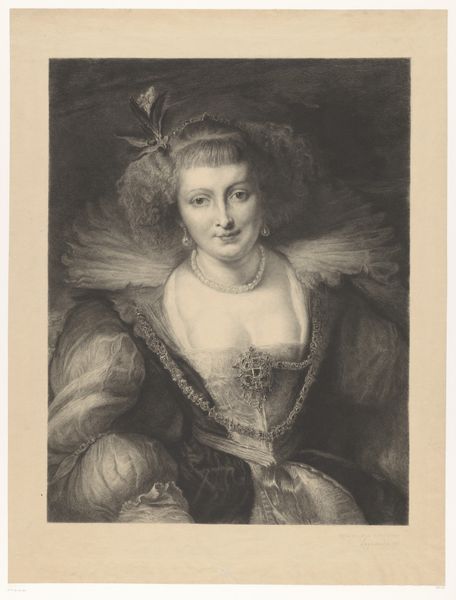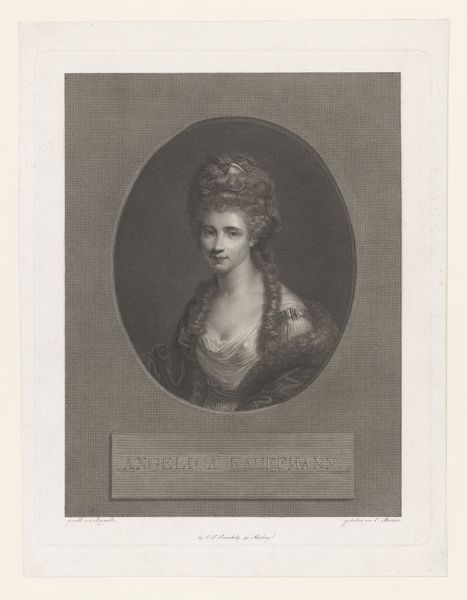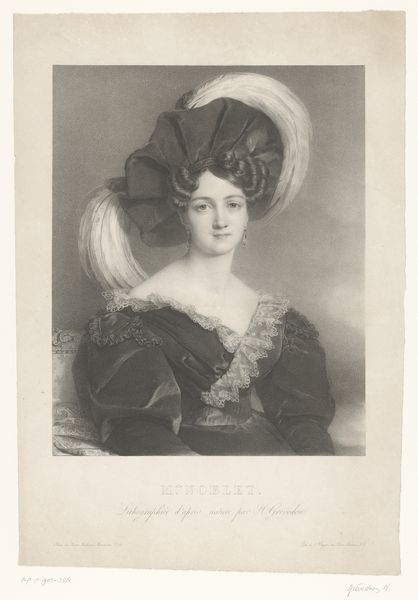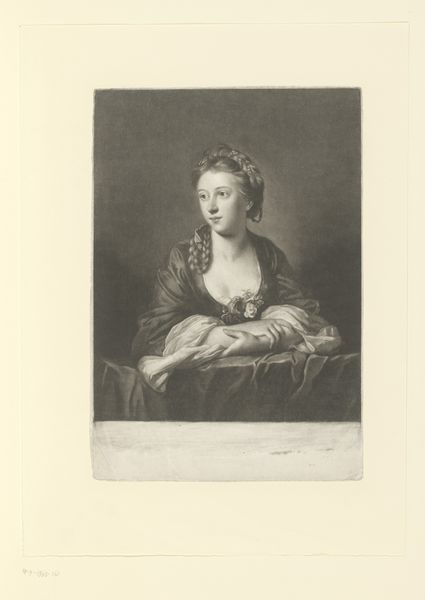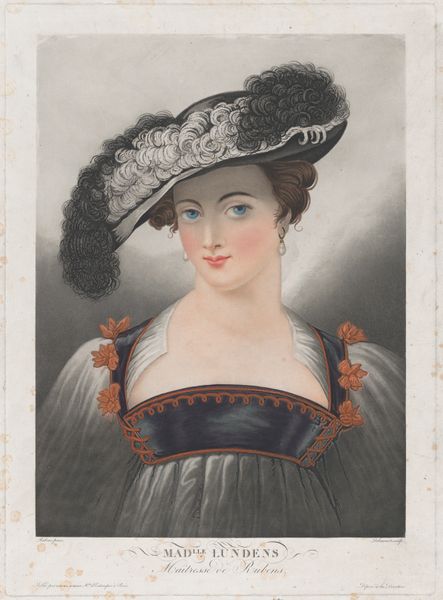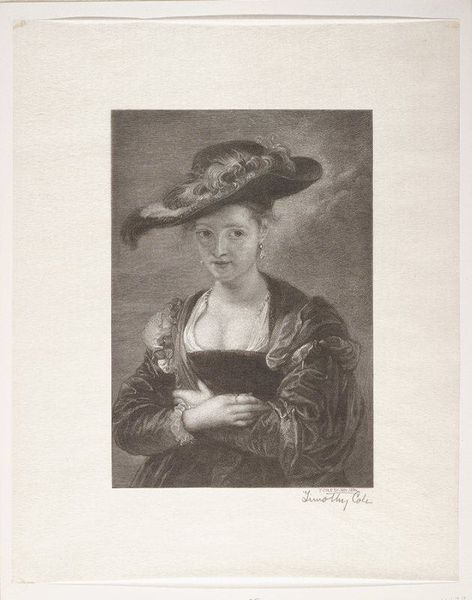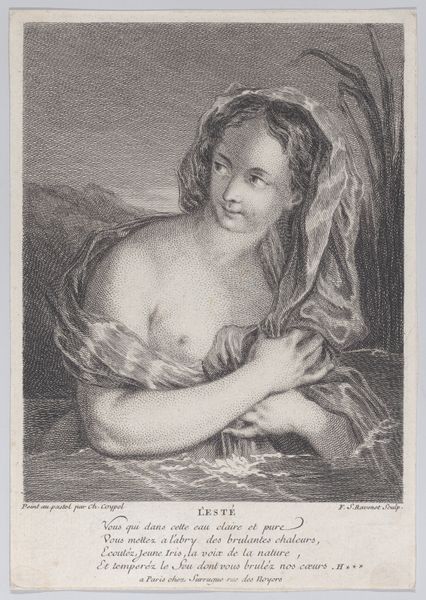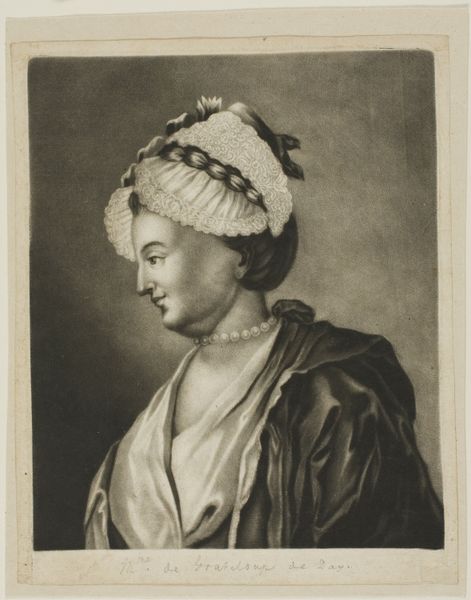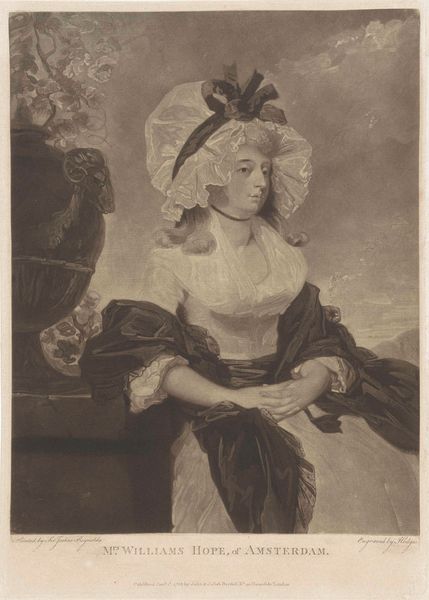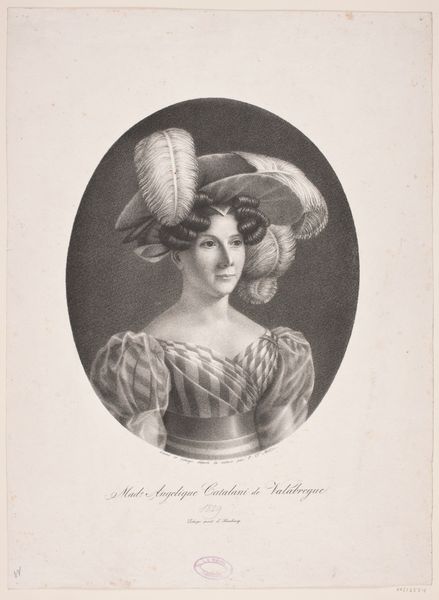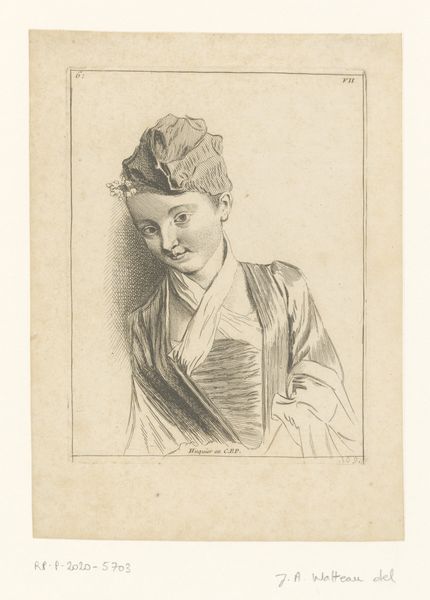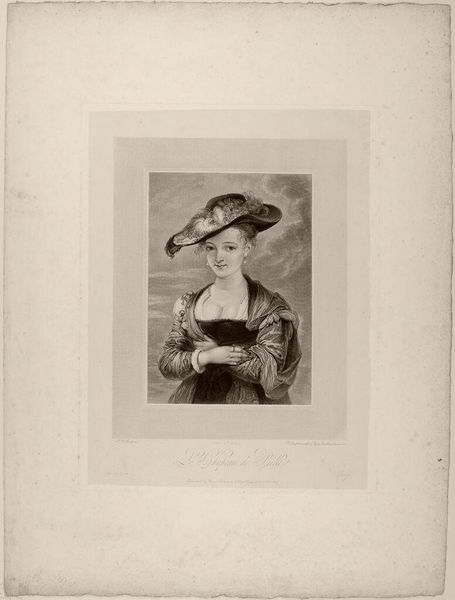
The Straw Hat (Le Chapeau de Paille), Portrait of Susanna Lunden 1823
0:00
0:00
Dimensions: Image: 10 3/8 × 7 5/16 in. (26.3 × 18.6 cm) Sheet (Trimmed): 16 1/16 × 11 5/8 in. (40.8 × 29.6 cm)
Copyright: Public Domain
Curator: What immediately strikes me is the almost tactile quality of this print. There’s something quite engaging in how the engraver, Robert Cooper, manages to replicate the soft textures of fabric and feathers using only line. Editor: I agree, it has an immediate softness, but for me it’s all about the implied story. She’s almost a muse-like figure caught in thought. Do we know who she is? Curator: Indeed. This engraving from 1823 is based on Peter Paul Rubens' painting titled "The Straw Hat (Le Chapeau de Paille), Portrait of Susanna Lunden," on view here at The Met. As you noticed, Robert Cooper captured this famed painting in a black-and-white engraving, showcasing his meticulous technique and keen attention to detail. I believe its creation as a print, however, is key to it’s wider social significance at the time. Editor: Ah, yes! Her averted gaze draws me in. And that hat – the feathers! They practically scream luxury, but not in an overt way, it's as though they're natural. This adds so much cultural weight in the rendering, given that the artist chose to embellish with natural symbols as indicators of status. Curator: Exactly. Reproducing masterworks democratized them, making them available for wider consumption and study. The rise of print culture meant that people who might never see the original painting could still experience and be influenced by it. Editor: I suppose in that context the material value transcends the symbolic value! In terms of access, at least. I'm struck by the dark undergarment she's wearing. Curator: Her attire reflects the fashion of the time but look closely. Cooper expertly reproduces the contrasts in fabric—the sheen of silk against the softness of her skin. This piece, like so many others of the era, provides a snapshot of social ideals and artistic appreciation. The labor involved in producing the original work versus the labor and materials used in its subsequent reproduction allows art to enter different levels of societal understanding. Editor: Indeed, she embodies both innocence and a subtle sensuality, a kind of Baroque Madonna translated for a wider audience. The "Straw Hat," indeed, almost becomes an emblem of something larger than itself through this material distribution. Curator: A fitting intersection of symbols and processes, perhaps! Editor: A very suitable summation for today's analysis!
Comments
No comments
Be the first to comment and join the conversation on the ultimate creative platform.
